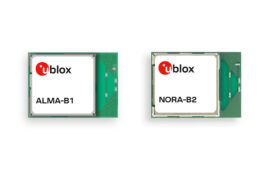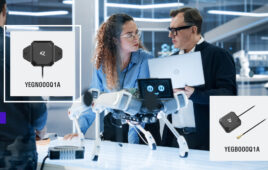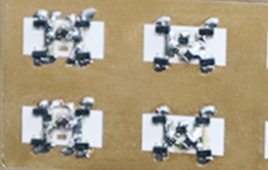It is expected that by 2020 there will be over 12.86 billion IoT sensors and devices in use, according to Gartner. The market is ever growing, with applications in everything from flight path optimisation and tracking production in oil fields to robot control and vertical farming. Here, Michele Windsor, global marketing manager for battery manufacturer Accutronics, looks ahead to 2019 and predicts the IoT trends that will effect design engineers in the electrical industry.
The growth in the industrial IoT market is showing no signs of slowing down, which means we will see more data used and, in turn, more traffic in 2019. The whispers around 5G are also getting louder and it is increasingly common to find it in use in industry, particularly in factory control applications. This in turn means increased security will be a key priority as the number of devices and users increases.
In a recent series of lectures, Martti Mäntylä Professor of Information Technology (Enterprise Systems) at Aalto University, and head of its industrial networks programme, asked, “Can 5G provide a management and operational architecture for 20 plus billion smart devices, providing the right mix of characteristics needed by next generation industrial use cases?”
This question is particularly relevant, given that network developments are ongoing and both edge and mesh technologies are evolving. Edge devices continue to perform with efficiency and speed, while mesh devices communicate with each other, using a network topology in which each radio node relays data for the network, without a need for internet access at all.
Similarly, advancements in Bluetooth mean that it too is primed for use in an industrial setting, where short bursts of data need to be sent in a noisy environment, where hundreds of sensors and devices are also transmitting.
Devices communicating with each other, either via Bluetooth or on a mesh or edge network, delivers multiple opportunities, for designers working on both home and industrial automation devices and networks. However, they also present unique challenges when incorporating a battery, particularly with regards to the frequency with which the device must pulse if it isn’t attached to a power grid. Because of the importance of uptime in network communication, backup power is vital.
It is of paramount importance that all nodes have sufficient power to deal with the consequent, infrequent high-frequency bursts of energy. The CR123A from Accutronics’ parent company Ultralife is a long-life battery that works perfectly with all sensors and is equipped to deal with these infrequent and intense bursts, without deteriorating quickly.
These batteries find applications in digital video cameras, SLR cameras, flashes, portable lights, smoke alarms, security systems, beacons and Emergency Locator Transmitters (ELT) as well as sensors, handheld electronics and Internet of Things (IoT) devices. The voltage range is 1.5V to 3.3V and the nominal voltage is 3.0 V, while the dimensions are 34.5mm x 17.0mm.
It’s difficult to envisage what 12.86 billion IoT devices looks like; in fact twelve billion of anything is difficult to comprehend. For instance, twelve billion seconds is a very difficult time period to visualise but, for reference, it’s 360 years.
So, if you want to imagine the size of the market opportunity new IoT devices represent for design engineers, just imagine 33 million new opportunities every single second from now until January 1, 2020. With business moving that fast, 2020 will be here in no time at all.



